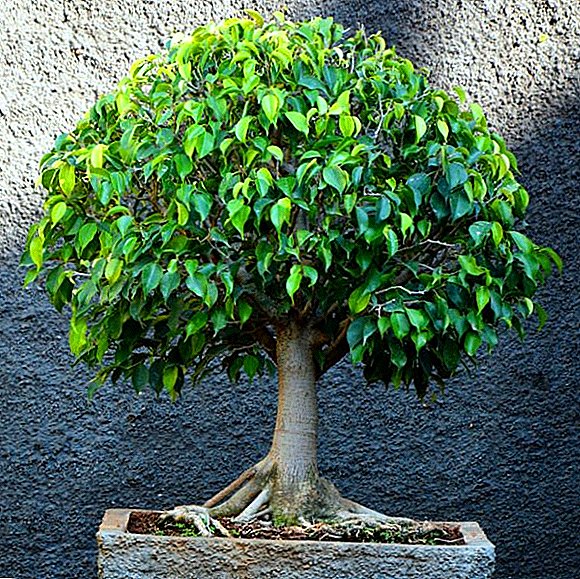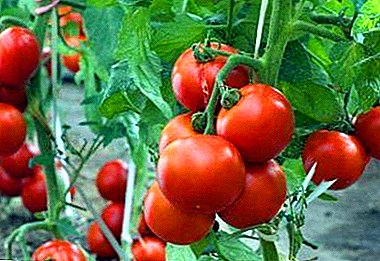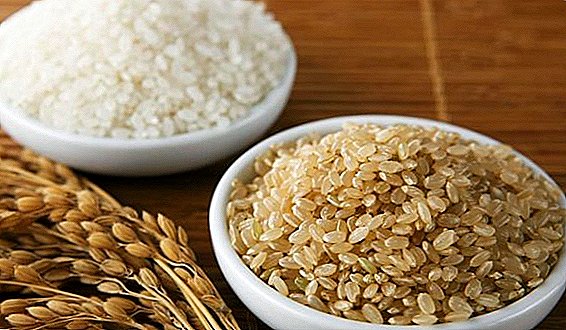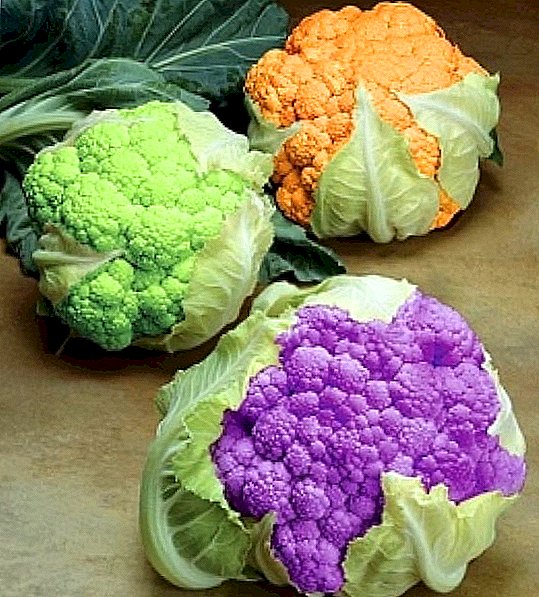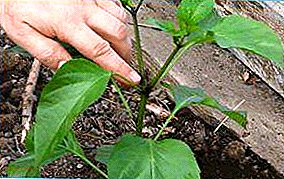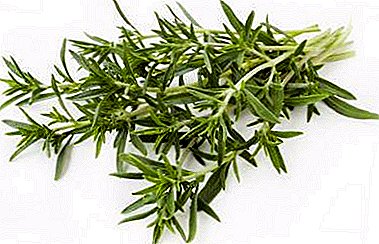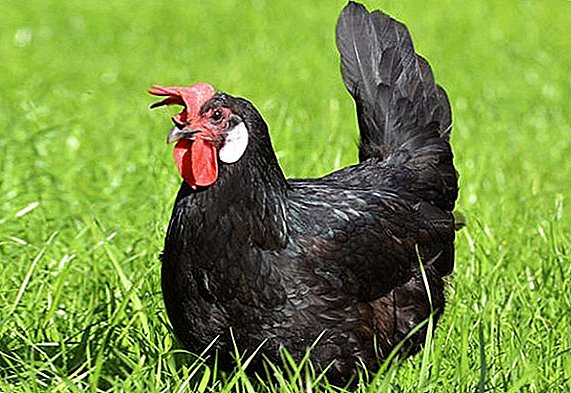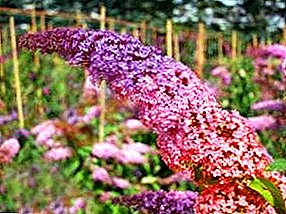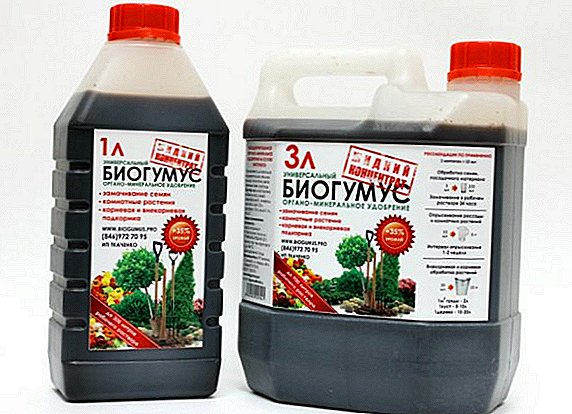 A good harvest and the healthy development of garden and garden crops are impossible without their constant feeding. Moreover, it is necessary to begin this procedure long before planting (at the stage of soaking the seeds) and then continue continuously. As you know, fertilizers are mineral and organic, both of these types are equally necessary for plants. Biohumus liquid is an organic top dressing specially developed for flower growers and gardeners, effective and convenient to use, but before starting to use it, it is useful to understand what it is and how it works.
A good harvest and the healthy development of garden and garden crops are impossible without their constant feeding. Moreover, it is necessary to begin this procedure long before planting (at the stage of soaking the seeds) and then continue continuously. As you know, fertilizers are mineral and organic, both of these types are equally necessary for plants. Biohumus liquid is an organic top dressing specially developed for flower growers and gardeners, effective and convenient to use, but before starting to use it, it is useful to understand what it is and how it works.
The composition of liquid biohumus
Liquid fertilizer biohumus is a concentrated solution containing all the "ingredients" of natural biohumus.
Did you know? The concept of "biohumus" emerged from the fusion of the Latin word "humus", which means earth (in the sense - soil), and the prefix "bio", indicating organic life. Thus, biohumus is a biological fertilizer, it consists of microorganisms useful for the soil, whose vital activity kills the pathogenic microflora and saturates the soil with useful elements. According to the production technology, this fertilizer is a product obtained from the processing of manure by earthworms, in other words, it can be said that biohumus is made by worms.

The basis of biohumus is compost processed by worms. Outwardly, it is very similar to the usual fertile land, which by and large is. However, in addition to compost, the fertilizer contains additional useful components necessary for plants to grow and develop. In liquid biohumus, all these components are in a state that is already dissolved and maximally prepared for absorption by plants.
From one-fourth to one-third of the composition of biohumus belongs to sodium and potassium salts of humic acids, humic acids and fulvic acids themselves, half and more are organic substances — amino acids, natural growth regulators, soil microorganism spores, strains of nitrogen-fixing bacteria.
In addition, biohumus contains all the major micro and macro elements needed by plants: nitrogen - from 1 to 2%, phosphorus - from 1.5 to 3%, potassium - from 1.2 to 2% (the composition of nitrogen-phosphorus-potassium component in liquid biohumus should be not less than 3 grams per 1 liter of fertilizer), as well as calcium, magnesium, iron, manganese and in a smaller amount - boron, zinc and copper (however, the proportion of heavy metals in biohumus does not exceed the maximum permissible concentrations for soil).
 Biohumus contains a large amount of vitamins.
Biohumus contains a large amount of vitamins.
Hydrogen indicator of biohumus - not more than 7.5; humidity - from 40% to 45%, ash content - from 35% to 45%.
The manufacturer guarantees the absence of weed seeds, helminth eggs and other harmful microflora for plants in biohumus.
All nutrients in liquid biohumus are correctly and correctly balanced, which ensures maximum efficiency in the use of this fertilizer.
Did you know? The earthworm, passing remnants of vegetation through its intestines, forms unique substances that, getting back into the soil, keep useful compounds for plants in them - they prevent the soil from washing out and weathered, disinfect and structure it. No other living being possesses such abilities.
What is liquid biohumus used for? Properties of matter
By itself, biohumus strengthens plants, accelerates the growth and processes of photosynthesis and metabolism. As a result, the decorative qualities of crops and their productivity increase. But liquid fertilizer adapted in the form of a concentrated extract.  In addition, it has a strong antimicrobial effect on seeds and seedlings, increasing their protection against pests and diseases.
In addition, it has a strong antimicrobial effect on seeds and seedlings, increasing their protection against pests and diseases.
Biohumus contains all the mentioned waste products of the worm and the microflora released by it, which determines the beneficial effect of this fertilizer.
In particular, biohumus:
- structures and heals the soil, returns fertility and inhibits the activity of pathogenic microorganisms in it;
- stimulates the development of plants, helps them to better break down and quickly assimilate minerals that are insoluble or difficult to reach for the root system and are found in depleted soil;
- increases the resistance of plants to pathogenic microbes and diseases, such as, for example, powdery mildew, decay and ascochytosis (especially effective for greenhouse vegetables and houseplants), the harmful effects of pests, as well as to weather hazards and other negative factors;
- helps seeds to germinate faster (sometimes twice), and seedlings and tree saplings better root;
- contributes to the correct development of flowers, increases their number and life expectancy, which is useful for any plants, but takes on particular importance for indoor decorative flowers;
- accelerates the ripening of fruits (up to two weeks), increases their quantity, taste and useful qualities (due to an increase in the content of plant sugars, proteins and vitamins), while this effect has nothing to do with chemical stabilizers and growth accelerators;
- It prevents the accumulation of nitrates in plants by binding heavy metals in the soil and radioactive substances.
 An important quality of biohumus is that its action begins almost instantly after application and lasts for decades. Unlike some other fertilizers (for example, containing chlorine harmful to plants), biohumus can be applied to the soil at any time of the year, and it is suitable for all types of soil.
An important quality of biohumus is that its action begins almost instantly after application and lasts for decades. Unlike some other fertilizers (for example, containing chlorine harmful to plants), biohumus can be applied to the soil at any time of the year, and it is suitable for all types of soil.
Thanks to all these properties, the Biohumus Liquid fertilizer has found wide application in a wide variety of forms (from soil application to spraying and seed soaking).
Important! You should not use a solution of liquid biohumus immediately, it is better to let it stand in the heat for at least four hours and only after that you should water it. During the period of the ovary and after flowering fertilizing should not be carried out.
Instructions for use of liquid biohumus
So, the main method of application of biohumus is fertilization into the soil (in open ground or in flower pots - for indoor plants). As with any other fertilizer, the use of biohumus implies strict adherence to the rate of application, which, as a general rule, involves the use of a 10% solution (one part of liquid fertilizer per ten parts of water), but can vary greatly depending on the individual requirements of the cultivated crops, and also their age and growth phase.
 So, for greens, spinach, lettuce, onions and garlic, weekly supplementation with a solution of biohumus liquid prepared at the rate of 0.2 l per a bucket of water is optimal, the use of fertilizer for vegetables requires the use of twice less concentrated solution, and for strawberries and other berries Only 60 ml of liquid humus is sufficient for a bucket of water.
So, for greens, spinach, lettuce, onions and garlic, weekly supplementation with a solution of biohumus liquid prepared at the rate of 0.2 l per a bucket of water is optimal, the use of fertilizer for vegetables requires the use of twice less concentrated solution, and for strawberries and other berries Only 60 ml of liquid humus is sufficient for a bucket of water.
Garden flowers are fed twice a month with a solution of 10-15 ml of liquid fertilizer per 1 liter of water, citrus fruits and grapes - with the same periodicity with a solution of 0.25 l per bucket of water. Biohumus liquid is effective when used for feeding houseplants. They should be watered during the growing season no more than once every two months.
Soaking seeds in biohumus is the second way to use fertilizer. Half a liter of fertilizer is used to germinate 1 kg of seeds. The solution should be prepared two times weaker than for root dressing (0.05 ml per 1 l of water). Soaking time is different for different cultures.
 Seeds of vegetables, melons, parsley, dill and ornamental plants can be soaked for 24 hours; radish, lettuce, spinach, onions and garlic (seeds) - 12 hours or a little longer; legumes - about six hours; grapes, pomegranate and citrus - no more than an hour, and tubers - and even less: a maximum of half an hour.
Seeds of vegetables, melons, parsley, dill and ornamental plants can be soaked for 24 hours; radish, lettuce, spinach, onions and garlic (seeds) - 12 hours or a little longer; legumes - about six hours; grapes, pomegranate and citrus - no more than an hour, and tubers - and even less: a maximum of half an hour.
Liquid biohumus is also used to care for seedlings. Immediately before planting it in open ground, prepared weak fertilizer solution is poured into the harvested hole; as a result, the seedlings take root much better and are less sick.
Important! Weak seedling roots can be burned with a normal fertilizer solution for an adult plant. Therefore, in this case, the solution rate recommended for the given culture should be reduced by five (!) Times.
Liquid biohumus is also useful to spray the leaves of plants, but here the concentration should be quite weak - about 0.005 ml of fertilizer per 1 liter of water. The procedure should not be carried out during flowering, but during the period of fruit ripening - just necessary.
Precautionary measures
 The use of liquid biohumus does not require adherence to any special precautions, because the substance is not toxic. So that fertilizer does not get into the stomach or mucous membranes, and also the microcracks do not penetrate into the skin, it is enough to put on rubber gloves before work, and after its completion - to wash your hands well with soap and water.
The use of liquid biohumus does not require adherence to any special precautions, because the substance is not toxic. So that fertilizer does not get into the stomach or mucous membranes, and also the microcracks do not penetrate into the skin, it is enough to put on rubber gloves before work, and after its completion - to wash your hands well with soap and water.
Liquid is packaged in plastic bottles that are completely safe from the point of view of fire regulations.
Important! If fertilizer drops do get into the eyes or on the skin, rinse well with plenty of running water. If swallowed, wash the stomach with a weak solution of potassium permanganate.
Storage conditions
Useful properties of liquid biohumus persist for one and a half years from the production date indicated on the package. At the same time, it is advisable to store the fertilizer in a dark place, but in any case not in direct sunlight. If the container with fertilizer left at the dacha is frozen - do not rush to throw it away: after returning to the liquid state, biohumus can be used for its intended purpose and does not lose its properties.
The sediment is also not an indicator of the unsuitability of fertilizer, but before using the bottle should be well shaken.
So, liquid biohumus is an absolutely safe, environmentally friendly and convenient to use organic fertilizer, useful both in the country or in the garden, and for improving the room greenhouse, provided you know how to use it.


